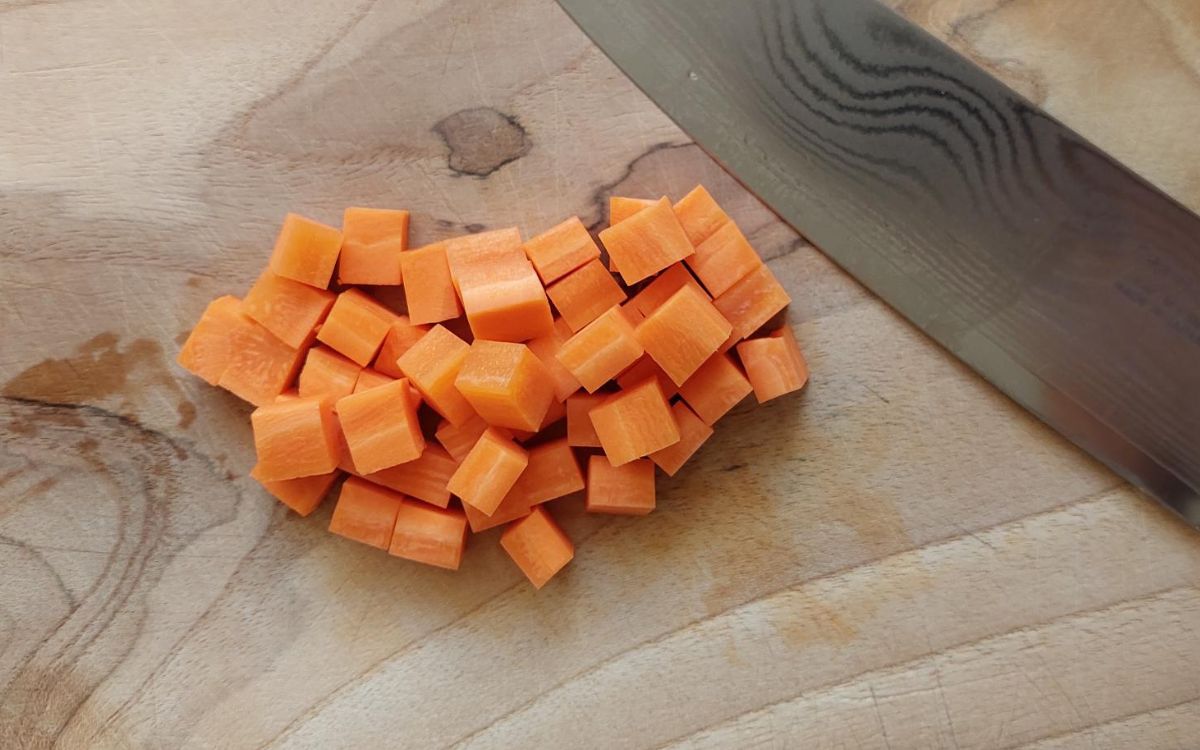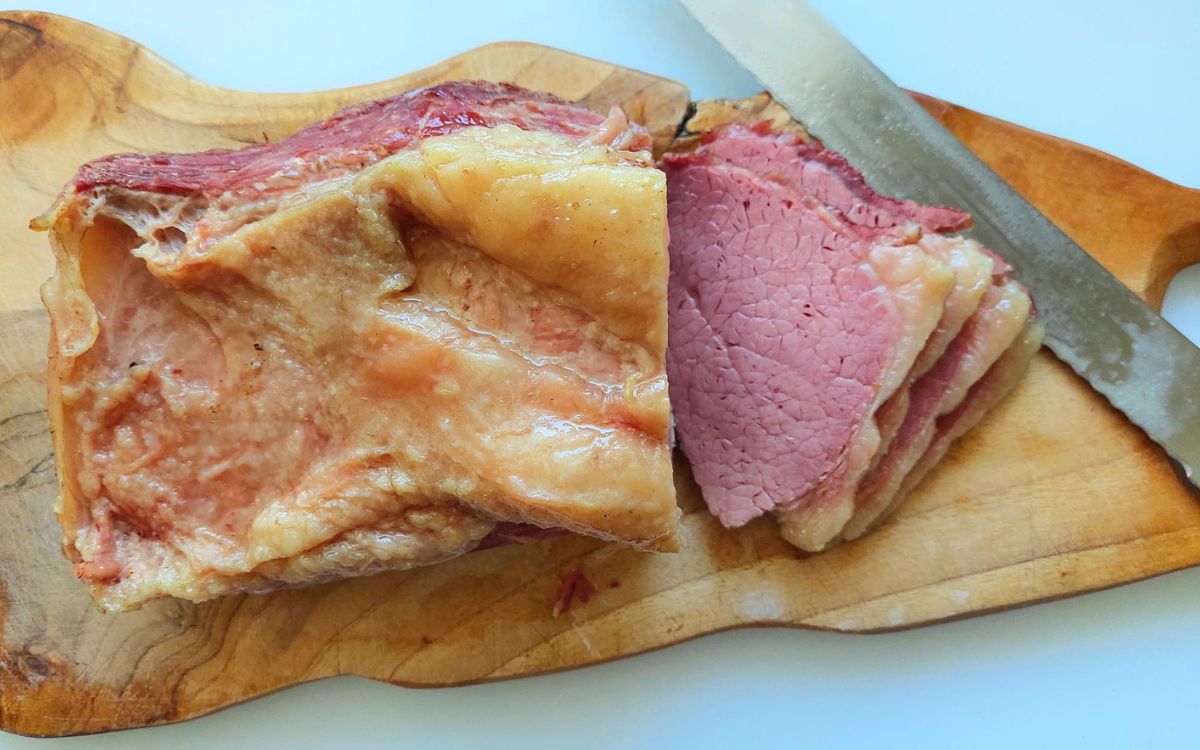Privacy Policy | Terms and Conditions | Disclosure Statement | License Policy
COPYRIGHT © 2024 | NUMBER 8 COOKING | ALL RIGHTS RESERVED.

Privacy Policy | Terms and Conditions | Disclosure Statement | License Policy
COPYRIGHT © 2024 | NUMBER 8 COOKING | ALL RIGHTS RESERVED.

Privacy Policy | Terms and Conditions | Disclosure Statement | License Policy
COPYRIGHT © 2024 | NUMBER 8 COOKING | ALL RIGHTS RESERVED.
Learning to cook great food demands more than just a passion for flavors; it requires mastering basic knife skills. As a seasoned chef with decades of experience, I can attest to the transformative power of precision cutting techniques.
In this comprehensive guide, I’ll share the anatomy of a chef’s knife and the different ways you can hold a knife when cutting. Also, I will dive into safety tips when holding a knife. Explore the intricacies of the nine fundamental vegetable cuts.
ADVERTISEMENT CONTENT BELOW
Also three tips for carving roasted meats and portioning steaks. We’ll discuss the essential knives every aspiring cook should have in their kitchen arsenal.

ADVERTISEMENT CONTENT BELOW
Proper knife grip is the foundation for effective and safe cutting. Mastering the art of holding a knife ensures efficient chopping, slicing, and dicing and minimizes the risk of accidents.
These are the two ways I like to hold a chef’s knife when cutting. The best grip is the one that feels comfortable and natural in your hand. The primary knife grips are: the handle grip, and the pinch grip.
But first, let’s explore the anatomy of the chef’s knife, so you can better understand how to hold a kitchen knife.
When talking about kitchen knives, there are terms like tang, bolster, spine, and heel. So, I’ve got an easy-to-follow guide that takes you through every part of a kitchen knife.
A visual guide with labeled parts can be immensely helpful for learners. It allows them to associate each term with its corresponding location on the knife

The handle grip or “handshake grip” is a fundamental and straightforward method suitable for various cutting tasks that require force rather than precision.

Mastering basic knife skills — I use the handle grip when cutting hard or firm ingredients, such as parmesan cheese, pumpkin, and sweet potatoes. I will also place my left palm (I’m right-handed) on the spin of the blade to counterbalance the knife when cutting down with force. I will also use the handle grip when boning meat and poultry.
ADVERTISEMENT CONTENT BELOW
The pinch grip, or “choke grip,” is a versatile and widely recommended technique by professional chefs. It is comfortable and makes the knife easy to control.

Mastering basic knife skills — This grip is suitable for most cutting tasks, including chopping, slicing, and dicing, making it a favorite among culinary experts. I use the pinch grip most of the time. It gives me control, and I can cut most things with this grip. I also develop a nice little callus on my middle finger.
Mastering basic knife skills — Ultimately, the key to mastering knife skills lies in practice and finding the most comfortable and effective grip. Whether adopting the handle grip for power or the pinch grip for balance and precision. Consistent practice will enhance your proficiency in the kitchen.
Let’s explore each of the nine basic vegetable cuts more deeply to gain a comprehensive understanding of their applications. This will contribute to you mastering basic knife skills.
Mastering these knife-cutting techniques lays the foundation for various culinary creations. With practice, you’ll enhance your kitchen efficiency and elevate the presentation and flavors of your dishes.
ADVERTISEMENT CONTENT BELOW

Mastering basic knife skills — This chiffonade is a fine ribbon cut typically used for leafy greens like spinach, basil, coriander, or lettuce. The leaves are stacked, rolled, and then sliced crosswise into thin strips. Chiffonade cuts range from 1.5mm (1/16 inch) to 3mm (1/8 inch) thick. The chiffonade cut adds a feathery texture to salads and is great for garnishes and dishes you want to infuse with herbaceous flavor.

Mastering basic knife skills — For julienne cuts, vegetables are cut into matchstick-like strips about 3mm (1/8 inch by 1/8 inch) by 50mm (2 inches) long. This precise, uniform shape works well for quick-cooking vegetables like carrots, celery, or potatoes. Julienne is great for salads, sandwiches, stir-fries, or dishes where you want pieces to cook quickly.

Mastering basic knife skills — The batonnet also called “baton” is a thick, rectangular stick shape, measuring anywhere from ¼-1 inch to ½-1 inch x 50-7.5cm (2-3 inches) long. It’s thicker than a traditional julienne cut. Batons are well suited for vegetables that need a little longer cooking time, like carrots, parsnips, or turnips. The uniform thickness ensures even cooking and lends a nice visual texture.
ADVERTISEMENT CONTENT BELOW

Mastering basic knife skills — Also called “country-style,” paysanne involves cutting vegetables like bell peppers, carrots, or onions into rustic shapes. This rustic vegetable cut is perfect for stews, braises, or roasted vegetable medleys, adding visual appeal and texture to finished dishes.

Mastering basic knife skills — A mirepoix also called “holy trinity” is a classic French cut of vegetables used as a flavor base for stocks and sauces. This consists of roughly diced onions, carrots, and celery. The uniform 6mm (¼ inch) dice is usually caramelized in fat or oil to extract maximum flavor.

Mastering basic knife skills — Macedoine, also called “diced or cubed,” can be a precise 1.2cm (½ inches) to 5cm (2 inches) cube cut. It is used to make a vegetable mixture (also called macedoine) of uniform pieces like carrots and potatoes. It is excellent for sautéing or as an accompaniment for proteins.
ADVERTISEMENT CONTENT BELOW

Mastering basic knife skills — A brunoise is an extremely fine, precise dice of vegetables. The pieces are cut into tiny cubes for an almost minced texture. This cut allows quick and even cooking, for an elegant look. Brunoise is commonly used for softer aromatics like shallots, garlic, onions, and bell peppers in salsa’s, sauces, soups, or stuffing’s. Firmer vegetables can also be brunoise for garnishes, salads, or delicate sautés. An expert brunoise shows off serious knife skills.

Mastering basic knife skills — Cutting vegetables and fruit wedges like potatoes, tomatoes, oranges into wedges involves halving lengthwise (through the stem/root) and then cutting into pie-shaped, long triangular pieces. Wedge shapes are excellent for roasting or grilling to maximize crispy exterior texture. Tomato wedges are wonderful in salads.

Mastering basic knife skills — Slicing refers to cutting vegetables into thin, broad, flat pieces. The thickness can vary based on the desired application. Slices have a disc or oval shape with two wide, flat sides. The thickness depends on the intended use. Tomatoes, avocados, cucumbers, and onions can be cut into slices.
ADVERTISEMENT CONTENT BELOW

Always slice meat across the grain. This will break the muscle fibers, making the meat tender. Use a sharp knife and make smooth, even strokes without tearing. When slicing roasted meats, I use a serrated knife for better control and consistency.
If you find, saw marks when slicing cooked meats. Your knife is likely dull and needs honing or sharpening.

Carve into natural muscle groups using bones as a guide. For poultry separate leg quarters, wings, and breast meat. Slice breast meat crosswise and against the grain. For roasted bone-in joints I follow the bone cutting away from me for safety reasons.
ADVERTISEMENT CONTENT BELOW

Use a sharp boning knife to trim any silverskin and excess fat. Cut portions into desired steak thicknesses or slicing if str-frying. When slicing boneless steaks, cut them perpendicular to the grain pattern.
Investing in the right set of knives is like assembling a toolkit for your culinary adventures. Each knife serves a specific purpose, contributing to the efficiency and precision of your kitchen endeavors. As a beginner you only need three knives: a chefs knife, paring knife and a serrated knife.
Chefs Pro Tip — When looking for a new knife, you want a kitchen knife with a full tang and made of stainless steel. As a beginner, avoid carbon-steel knives; they are only for the pros.

Versatile Workhorse — The chef’s knife is the cornerstone of my knife kit. I use it for various tasks such as chopping herbs, portioning meats, and slicing and dicing fruits and vegetables.

Intricate Precision — The paring knife is my go-to tool for intricate tasks requiring precision. Such as coring tomatoes, trimming, and making delicate cuts. Its smaller size provides increased control.

Crucial For Tough Tasks — The serrated knife is indispensable for slicing through items with a tough exterior or a delicate interior. Such as crusty bread, roasted meats, tomatoes, and fruits. The serrated edge ensures clean cuts without crushing or ripping.
Cooking is a science and a skill that requires a deep understanding of both the technical and creative aspects. Cooking is also a matter of precise measurements and ratios.
For example, baking is particularly sensitive to accurate measurements and temperatures. A slight deviation in the amount of an ingredient or cooking degrees can result in a completely different outcome. So, to help you, here is a handy little unit converter tool for cooking without guesswork.